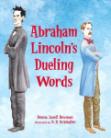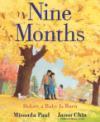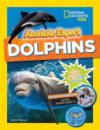 Welcome to STEM Tuesday: Author Interview & Book Giveaway, a repeating feature for the fourth Tuesday of every month. Go Science-Tech-Engineering-Math!
Welcome to STEM Tuesday: Author Interview & Book Giveaway, a repeating feature for the fourth Tuesday of every month. Go Science-Tech-Engineering-Math!
Today we’re interviewing Leslie Bulion about her new book Superlative Birds. This fascinating and brilliantly-illustrated book of fun and friendly bird poems is layered with facts and humor. It’s already garnered multiple starred reviews, including Kirkus who says, “With characteristic humor and carefully crafted language, poet Bulion offers readers amazing facts about birds of our world…. These engaging poems read aloud beautifully…. Excellent resources for further bird study complete this delightful offering.” There’s a terrific downloadable free Teaching Guide for the book, too.
Mary Kay Carson: How did this book come about?
Leslie Bulion: I read about the turkey vulture’s remarkable sense of smell and wrote a poem about it that was included in Sylvia Vardell and Janet Wong’s terrific Poetry Friday Anthology series. The turkey vulture’s superlative ability made me wonder about other bird-world “bests.” Each of my collections is organized around a theme and that’s how the theme for this collection hatched, complete with its ready-made, rhythmic, rhyming title: Su-per-la-tive Birds!
Superlative Birds celebrates bird “world record-holders” through poems written in different poetic forms accompanied by short, narrative notes. While introducing these remarkable birds, readers explore all of the special attributes that help define birds: wings, eggs, nests, and beaks, as well as migration, song, and other important characteristics of birdness. A chickadee “spokesbird” challenges readers to find those attributes belonging only to birds (hint: not those I just mentioned!).
MKC: Why use poetry in a book about birds?
Leslie: In 2003 I attended a summer class at Cornell Adult University called “The Way Bugs Work.” We looked under rocks, swept nets through the field, and examined critters in the lab. I kept a science journal, scribbling notes and sketching bugs. I began to imagine insects as cool little adaptation stories. I’d written poems since elementary school and wondered if writing in the spare, elegantly small space of a poem could be a creative way to tell a cool science story. Those adaptation-themed stories metamorphosed into my first science poetry collection, Hey There, Stink Bug! (Charlesbridge 2006). My fourth collection, Leaf Litter Critters (Peachtree 2018) hatched from a bunch of sketches in that same summer science journal! Leaf Litter Critters takes an ecosystems approach, moving readers through trophic levels from primary decomposer to top predator in a “who-eats-who” of the decomposer food web.
MKC: To whom do you write–what imagined audience–while drafting?
Leslie: In creating my science poetry collections I hope the music and imagination space of poetry, the accompanying short narrative notes, and the addition of visual, narrative and resource-rich backmatter make these explorations of science and nature appealing and accessible to readers with a variety of learning styles. There’s a back-and-forth interplay between the poems, the illustrations, and narrative notes that can work for readers of many ages. At heart I’m still a fourth-grade kid who looks under rocks, sifts through sand, scans the trees and the sky, writes poems, reads and imagines. I would love for readers to find joy and wonder in these ideas and activities, too.

Leslie Bulion has been playing with the music of poetry since the fourth grade and has been a hands-on observer of the natural world from the moment she could peer under a rock. Leslie’s graduate studies in oceanography and years as a school social worker inform her science poetry collections: Superlative Birds, Leaf Litter Critters, At the Sea Floor Café, Random Body Parts, and Hey There, Stink Bug. www.lesliebulion.com.
MKC: Do you have a STEM background?
Leslie: I have graduate degrees in biological oceanography and social work, and worked as a medical social worker and a school social worker. I like to think my somewhat circuitous route has led me to my current work as a science communicator for young readers.
MKC: Could you give us a peek into your process? Do you write the poems first?
Leslie: When I was ready to explore the wild world of birds, I started by reading widely—nonfiction books and articles about birds, as well as fiction and memoir. This was the full-immersion, beginning stage of my research. There are a gazillion bird books. I didn’t read them all! I always include an element of hands-on learning when researching a book. For Superlative Birds I took a week-long class at the fascinating Cornell Lab of Ornithology. I had been interested in birds for a long time, but that week hooked me on birding—a fully sensory, mind and soul-expanding, moving meditation I do on my own and with friends. I love to record and share my citizen scientist observations in the ebird.org app on my phone.
I have a habit of tucking articles and notes into idea files for future projects—my super-fun “to-do” list. Those files give me a bit of a head start when I’m ready to work on a new project. Since I had decided to use superlatives to highlight the attributes we associate with birds, some amazing birds I’d read about did not make the cut. I read more specifically about the birds I did select. I took lots of notes, both for science concept and with an ear to language. After I finished most of my research (there’s always more!) I tackled the poems one-by-one. I considered how the form of each poem might enhance its subject. I worked on a poem (with many, many revisions, and more research), then the accompanying science note (ditto), then the poetry note. After those were finished, I created a rough plan for potential back matter. I worked very closely and joyfully with Robert Meganck on both Leaf Litter Critters and Superlative Birds, and we’re having a blast working on our upcoming Amphibian Acrobats (Peachtree 2020).
Win a FREE copy of Superlative Birds
Enter the giveaway by leaving a comment below. The randomly-chosen winner will be contacted via email and asked to provide a mailing address (within the U.S. only) to receive the book.
Good luck!
 Your host is Mary Kay Carson, author of Alexander Graham Bell for Kids, Mission to Pluto, Weird Animals, and other nonfiction books for kids. @marykaycarson
Your host is Mary Kay Carson, author of Alexander Graham Bell for Kids, Mission to Pluto, Weird Animals, and other nonfiction books for kids. @marykaycarson







 Amy M. O’Quinn
Amy M. O’Quinn 

 Natascha Biebow
Natascha Biebow
 Nikole Brooks Bethea
Nikole Brooks Bethea





 Susan M Latta
Susan M Latta 
 Janet Slingerland
Janet Slingerland
 Miranda Paul
Miranda Paul 




 Kate Narita
Kate Narita 
 Laurie Wallmark
Laurie Wallmark 
 Mary Kay Carson
Mary Kay Carson MISSION TO PLUTO
MISSION TO PLUTO Jennifer Swanson
Jennifer Swanson


